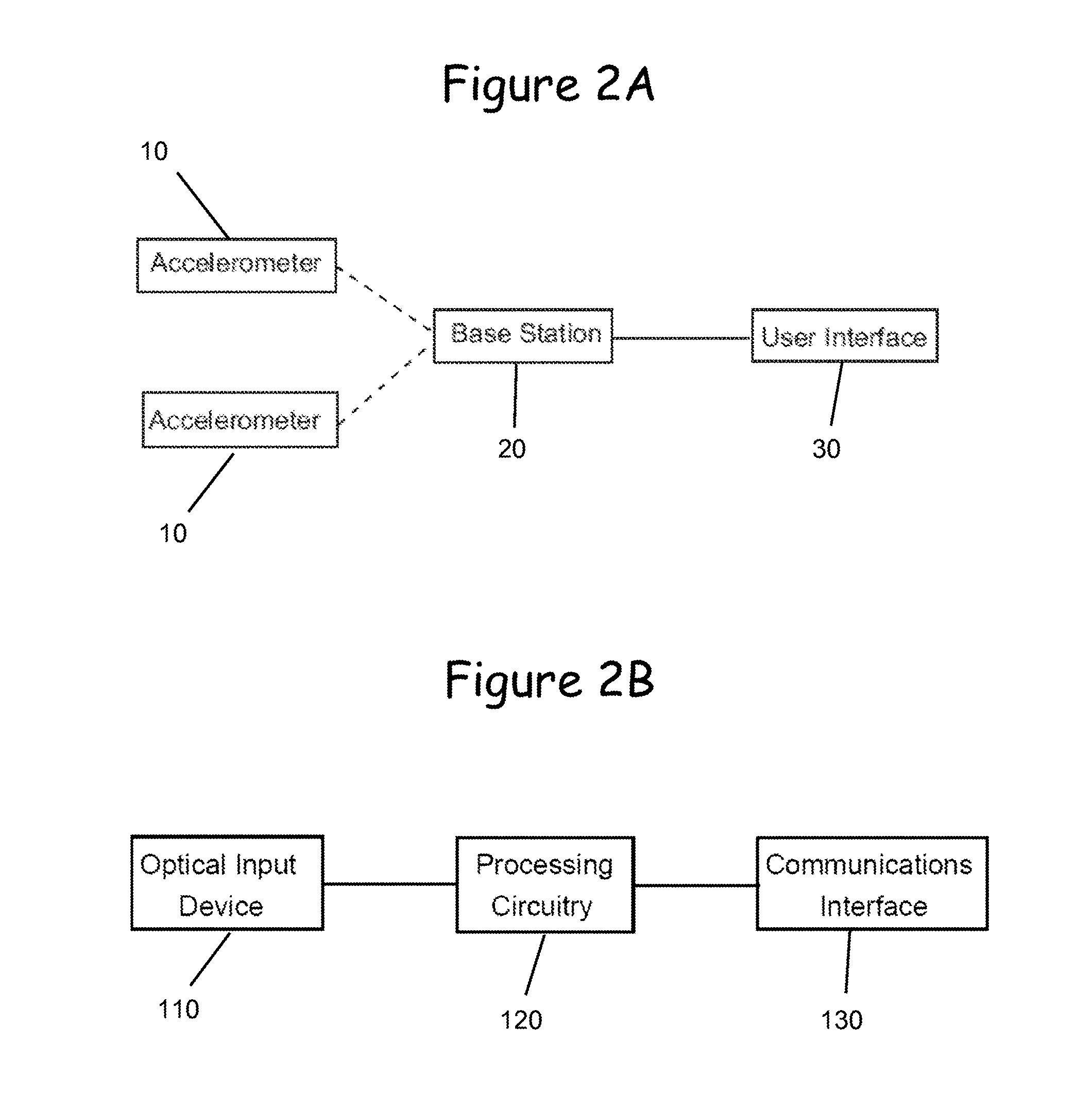System for evaluating infant movement using gesture recognition
a gesture recognition and infant technology, applied in the field of infant gesture recognition system, can solve the problems of increasing survival, increasing the incidence of long-term complications, and unreliable early diagnosis of cp, and achieve the effect of facilitating their use with infants
- Summary
- Abstract
- Description
- Claims
- Application Information
AI Technical Summary
Benefits of technology
Problems solved by technology
Method used
Image
Examples
example 1
Data Collection and Analysis
[0084]Test Subjects and Protocol.
[0085]Ten (10) preterm infants at 30-43 weeks corrected gestational age were selected for observation. Five accelerometers were used for data collection. Devices were embedded in cloth bands that were placed around the wrists, ankles and forehead of the infants with a canonical anatomical orientation. Each accelerometer measured three (3) orthogonal axes of acceleration on the head and each of the four (4) limbs. All infants were monitored and videotaped for one hour in an isolette wearing only a diaper and with all swaddling removed. The ambient temperature of the isolette was adjusted and maintained to standard levels. A video camera having a mid-sagittal view of the infant was positioned above the isolette at a downward angle of 45 degrees to record motion for video scoring.
[0086]Data Collection and Analysis.
[0087]The accelerometers transmitted data that was sampled non-uniformly at approximately 19 Hz in real-time to a...
example 2
Wireless Accelerometer Design
[0122]An accelerometer produced for use with the present system consisted of (1) a microcontroller and radio board and (2) a sensor and power board. The microcontroller and radio board included a 2.4 GHz RF transceiver with an embedded 8051-compatible microcontroller, a chip antenna, a 32K EEPROM, and a 20-pin connector. The 32 KB serial EEPROM is used to store the application program. The transceiver used a GFSK modulation scheme in the 2.4 GHz ISM band. It had 125 different frequency channels that are 1 MHz apart and supported frequency hopping among them. The maximum RF output power was 0 dBm at the maximum data rate of 1 Mbps. The output power, data rate, and other RF parameters were set from software. A chip antenna was used to radiate RF signals with a high-performance 2.4 GHz antenna measuring only 6.5 mm×2.2 mm×1.0 mm and its maximum gain was 0.8 dBi.
[0123]The power system of the accelerometer consisted of a lithium coin battery (CR1632), a step-...
PUM
 Login to View More
Login to View More Abstract
Description
Claims
Application Information
 Login to View More
Login to View More - R&D
- Intellectual Property
- Life Sciences
- Materials
- Tech Scout
- Unparalleled Data Quality
- Higher Quality Content
- 60% Fewer Hallucinations
Browse by: Latest US Patents, China's latest patents, Technical Efficacy Thesaurus, Application Domain, Technology Topic, Popular Technical Reports.
© 2025 PatSnap. All rights reserved.Legal|Privacy policy|Modern Slavery Act Transparency Statement|Sitemap|About US| Contact US: help@patsnap.com



